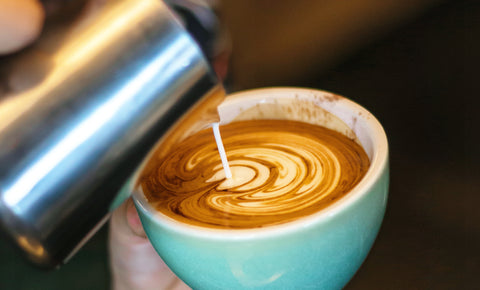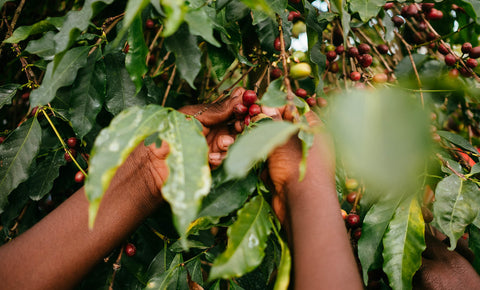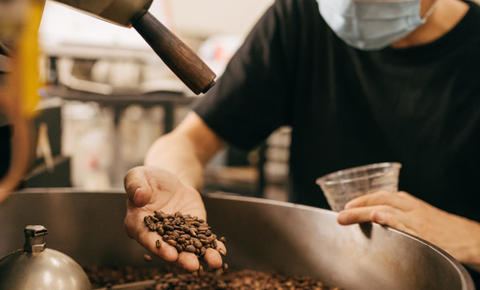 © Image provided with permission by Matt O'Donohue from Abstract Gourmet. All rights reserved by photographer
© Image provided with permission by Matt O'Donohue from Abstract Gourmet. All rights reserved by photographer
It is easy to forget, for a native speaker, that the lingo of coffee can be complex and confusing. Try explaining to a freshly arrived tourist that they can’t just order “a coffee”, before leading them through the Byzantine laws and sub-clauses of the modern coffee menu, if you need to be reminded. Furthermore, each café is free to make their own decisions about what these different coffee words mean, and the common definitions shift over time and from place to place. In this article I won’t be diving into the history of these drinks, or attempting to explain how we got where we are now. Instead, I’ll aim to provide a practical guide to the state of the specialty menu as it is now, and what it might look like in the future.
Black Coffees
Espresso/Short Black
The simplest drink to prepare, an espresso is a single shot of coffee, usually served in a small demitasse cup. The term short black is used interchangeably with espresso, although I have heard of people adding extra hot water when a short black is ordered. Recently, cafes have started to experiment with the cups the espresso is served in. An espresso served in a wider cup or glass allows more aroma to reach the drinker, whilst serving the espresso in a room-temperature, or even chilled, cup will drop the temperature of the coffee faster and create a different sensory experience.
Long Black/Americano
The long black is usually a double espresso, poured over hot water. The espresso is traditionally poured directly on to the water, although this is primarily for aesthetic reasons (to keep the crema intact,) and you could make an argument that it tastes better all mixed in. The ratio of coffee to water varies, but I think somewhere in the 1:1 to 1:2 range tastes delicious. It is really important to get the temperature of the water right. Just like your milk coffees, long blacks should be at a drinkable temperature when first prepared, I don’t want to burn my tongue anymore!

© Image provided with permission by Emily Bartlett. All rights reserved by photographer
Milk Coffees
Flat Whites/Lattes/Cappuccinos
Let’s get this out of the way: they’re basically all the same. While that might hurt to hear, it’s the truth. We’ll talk about why soon, but first let’s look at the “differences.” flat whites, lattes and capps are generally comprised of a single shot of espresso, topped up with steamed milk, served in a cup 150ml-200ml in size, although your mileage may vary. In most cases, lattes will be served in a slightly larger glass, while the capp and flat white are in the same ceramic cup. The cappuccino (usually) gets a dusting of chocolate powder too. The last difference is in the foam level, with the flat white sitting at around 1/2cm of foam, the latte at 1cm and the capp at 1.5cm, but again, this will vary wildly between cafes and baristas.
So, all three of these drinks boil down to espresso mixed with about the same amount of milk. Granted, the amount of foam will affect both the textural experience and strength of the drink (more foam equals less milk equals more strength.)The difference is often minimal, however and anyway, is there a “best” amount of foam? What amount of foam is the most delicious? I want that one.
Macchiato
You’ve probably heard that Macchiato means “stained” in Italian, and this is true. At its simplest, a macchiato is a single espresso with a small amount of milk and a “stain” or “spot” of foam on top of the coffee. Of course, it’s not really so simple, there are actually many variations on this drink, which seems to fluctuate wildly according to location. Some common varieties are the “short macc topped up,” which is a single espresso in a demitasse topped up with milk; the “long macc traditional,” which is a double espresso in a latte glass with a dash of milk and foam; and the “long macc topped up,” which is the same drink, topped up.
Piccolo Latte
Piccolos are lattes made with less milk. They’re either identical to a short macc topped up, or in their own, slightly larger than an espresso cup but smaller than a latte glass, cup.
Babycinos
A babyccino order can be an irritation to many baristas, however a perfectly made babyccino can be a thing of beauty, and bring a lot of joy to our smallest customers. The babycino should be almost entirely foam because babies get enough milk in their day to day. The foam should be dense and at a cool temperature, with a light dusting of chocolate. Syrup in the bottom is cheating and can lead to sugar-related meltdowns later in the day.
The Future
The problem with modern menus is that they provide lots of drink options, with little in the way of meaningful choice. Drinks that may have been historically different (big, milky lattes; cappuccinos with mountains of foam; small, dense flat whites) have been homogenised into drinks that are more delicious, but fundamentally the same. I believe the coffee menu should be designed actively, not just by serving what everyone else serves, but with a focus on engaging your customers’ minds and palates. One approach is to pare the menu back to the basics, and offer a minimum of drinks that are all delicious and show your coffee at its best, for example just offering black and white coffee instead of an endless list. Although this is not a new idea, it’s one that hasn’t caught on as big as it could have. Another approach is to add drinks that are meaningfully different. Adding signature-drink/cocktail-type concoctions to the menu is something people are already playing with, and it’s a fun way to experiment with new flavour experiences. We’re already offering different coffees, could we extend this to offering different espresso styles on the same menu? And while I’m asking for stuff, can we get more espresso tonics please? They’re delicious.
The counter-argument to all this is that customers like having this arbitrary choice, that they enjoy the ritual of their morning cup of coffee and will be upset if some upstart barista tries to get in their way. People tend to project their personality onto their favourite drink and derive satisfaction from that. In fact, drink choices can help to define a person’s personality, both internally and externally. Maybe they like being a serious “long macc drinker,” or a happy-go-lucky “latte lover.” And that tradition is truly valuable and not something to be thrown away lightly. Not every café needs to be challenging the status quo, but every café owner should be thinking about it, and considering how they’d like to present their product. Change has to be made with a light touch, and excellent service is the only way to smooth out the bumps in the road. We can create new traditions, perhaps more meaningful ones, or maybe we’re ok with the old ones?
This article was originally published on the Five Senses Coffee website: The espresso menu explained.






